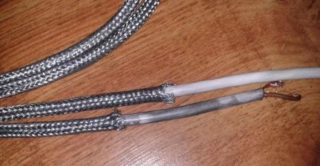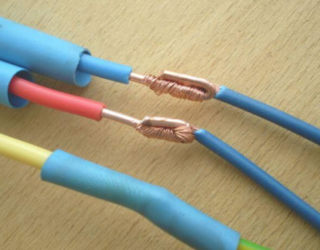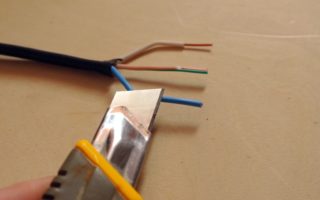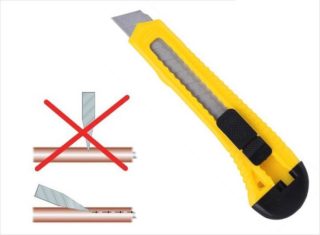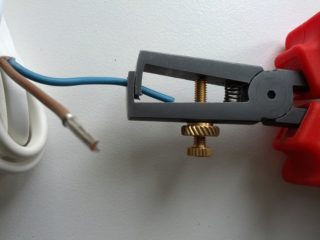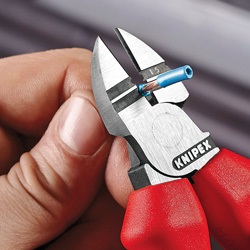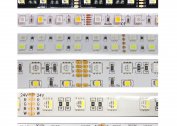Work with wires and cables requires stripping products from the insulating layer. Usually this layer is thin and easy to damage when you try to remove it, so you need to be able to strip the wires. In order to properly strip the conductor from insulation and avoid mistakes, you should adhere to certain rules and recommendations.
Features of the structure of conductors
Electric wires and cables vary in structure. They are single-core and multi-core, and are also made of different materials (copper, aluminum). In the first case, the device has one core, which is enclosed in insulation. Stranded wires are several cores that are twisted together and enclosed in common insulation.
The insulating layer protects the product from external influences. It can be single or double and can be made of the following dielectric materials:
- Plastic. Thermoplastics are commonly used that support combustion. For special applications on products with increased requirements, thermosetting plastics are used.
- Rubber. It hardens when heated, supports combustion.
- On a fabric basis. There are certain types of fabrics that can maintain their properties at temperatures up to 400 ° C.
- Shielding braid. Protects the product from electromagnetic interference. In fact, it is not an insulator.
- Reservation Protects cable from damage.
Depending on the type of insulating layer and its thickness, a removal method is selected.
What is stripping for?
Stripping the conductor may be required in different cases. Most often, removal is necessary:
- when connecting two wires;
- when performing wiring in the room;
- for connecting fixtures;
- for connecting electrical equipment;
- for installation of sockets and switches;
- when installing equipment in a junction box.
All work with electric current must be carried out with the power off. Also, the master must have personal protective equipment and a professional serviceable tool.
How to do stripping and basic mistakes
To safely and correctly clean the wires, you need to follow a few simple requirements.
- The exposed part must be completely covered by the joint.
- From the core, the insulating layer must be removed from all sides.
Most often, home masters make the following mistakes when stripping:
- Leave the exposed wire open. This can lead to electric shock.
- Leave fragments of insulation on the core. Then the conductor will not be fully and securely crimped, due to which the quality of the contact will suffer.
To remove the insulation, you will need a special tool or knife.
Removal with a sharp knife
A knife is a tool that any home craftsman has. It allows you to strip not only individual wires, but also cables with several cores.
Benefits:
- any specialist has a knife;
- Easy to configure the tool to work;
- Convenience of removing a layer from thick conductors.
For proper cleaning, the knife blade must be sharp, placed parallel to the vein. First, a thin layer of insulation is cut off. By turning the wire, insulation is removed on the other sides.Work is completed only after removing the layer from all sides. Using this method, it is convenient to strip thick cables and wires.
It is important to carry out the work carefully without leaving traces of the blade on the wire itself. In the future, a critical zone may occur in these places, which will lead to the destruction of the wire. For this reason, it is recommended that you choose another way to remove the insulation from the thin wire.
Special tool removal
Using a knife for stripping is not the best method. The risk of damage to the conductor is high, which is why you need to work extremely carefully and accurately. Professional electricians have in their arsenal special devices for stripping wires - strippers:
- A suitable place is chosen for exposing the wire, which is called a stream.
- A conductor is installed in the stream.
- Handles of an automatic isolation stripper are removed.
- The wire is crimped, after which the scraper removes the insulation.
The advantages of the device include the high speed of the procedure, reliability and durability. The disadvantage is the high price. Such mechanisms are bought by professionals who are constantly faced with the need to strip wires from insulation.
Create a homemade remover
Some home craftsmen prefer to use homemade devices to remove the insulating layer. To create a device, you need a strip of metal - for example, a blade blade. It makes an angular slot for the diameter of the conductor. The inner surface is sharpened to produce sharp edges.
The cable is inserted into the corner slot and fixed in it. Then with effort it needs to be stretched. As a result, the insulation should be removed from the metal without much difficulty.
Instead of a homemade tool, you can use special pliers with slots. The algorithm and principle of stripping the wire is similar.
Alternative Stripping Methods
Less commonly used to clean the wire combs. These are devices for removing single and double sided layers. They are inexpensive and easy to strip.
You can use side cutters. They also crimp the wire on both sides. To remove the insulation, gently pull on the conductor. During operation, you can not squeeze the handles strongly, otherwise the core will be damaged.
If the insulation is made of cloth material, it is difficult to remove. The thread wraps tightly around the core, making it difficult to remove with a knife. In this case, cleaning is carried out with fine grain sandpaper. She needs to clean the area on one side. The rest of the thread will be removed easily after such manipulations. The method is actively used by ham radio for the PELSHO wire.
To remove the protection from the shielded wire, make cuts in the outer sheath. Then it is removed, after which the shielding braid unwinds. The final step is to remove the insulating layer from the middle conductor.
Sometimes, to expose the cable, you have to burn the conductor with the help of heated surfaces. To remove the protection, open fire can also be used. Removal may be uneven and damage to the conductor is possible. This method is dangerous, therefore, GOST prohibits its use.

